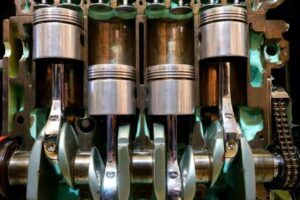Choosing convertible baby cribs is a significant decision for parents, as it is a central piece of furniture in a child’s nursery. A quality crib provides a safe sleeping environment for infants and adapts to the child’s growth, transitioning from a crib to a toddler bed and beyond. Understanding the essential features to look for in these devices can help ensure that the investment is both practical and beneficial in the long run.
Safety Standards and Certifications
The foremost consideration when choosing a convertible baby crib is safety. It is crucial to select a crib that meets current national safety standards. Cribs that comply with updated regulations that eliminate drop-side rails are generally safer, as these pose a risk to infants. Also, the spacing between slats should not exceed 2 ⅜ inches to prevent entrapment.
Sturdiness and Build Quality
To ensure durability and stability, a convertible crib must be constructed from high-quality materials. Solid wood is often preferred due to its strength and longevity. Cribs should feature a robust frame that can withstand the wear and tear of daily use, especially as the child grows and begins to climb. A well-built crib provides safety and satisfaction to parents.
Convertible Design Options
The primary advantage of a convertible crib is its ability to transform as the child grows. Most cribs can transition from these to a toddler bed; some models can even convert into a full-size bed. When selecting a crib, it is essential to consider the number of conversion options available. For instance, a 3-in-1 typically converts to a toddler bed, while a 4-in-1 may also serve as a twin or full bed headboard.
Adjustable Mattress Heights
Another critical feature to look for is adjustable mattress heights. Many convertible cribs offer multiple height settings, allowing parents to lower the mattress as the child grows. This feature is particularly important for safety, as it prevents infants from climbing out once they begin to stand. One with four adjustable levels provides the most flexibility, effectively accommodating the child’s developmental stages.
Non-Toxic Materials and Finishes
Health and safety extend beyond structural integrity; the materials used in the crib’s construction are equally important. Parents should seek cribs made from non-toxic materials, free from harmful chemicals such as lead, phthalates, and volatile organic compounds (VOCs). Cribs that have undergone rigorous testing for chemical emissions ensure a healthier indoor environment for the child.
High-Quality Mattress Support
Another vital aspect of a convertible crib is the mattress support system. A sturdy mattress support ensures that the crib remains stable and secure. Options include a solid board, wood slats, or a spring-wire grid. A spring-wire grid is often recommended, as it provides better breathability and can withstand toddlers’ inevitable jumping.
Aesthetic Appeal and Style
While functionality is paramount, the aesthetic appeal of a convertible crib should not be overlooked. Opting for one that complements the nursery’s decor can enhance the overall ambiance of the space. Colors impact children’s learning and behavior in significant ways. Neutral colors and classic designs tend to have a timeless quality, allowing them to adapt to changing styles as the child grows.
Choosing a quality convertible baby crib involves careful consideration of various features that ensure safety, durability, and adaptability. Parents can make an informed decision by focusing on safety standards, build quality, design options, adjustable mattress heights, non-toxic materials, high-quality mattress support, and aesthetic appeal.







